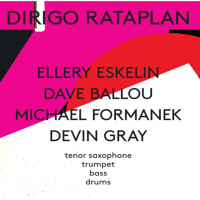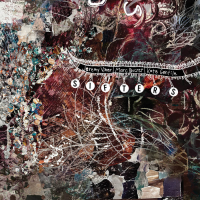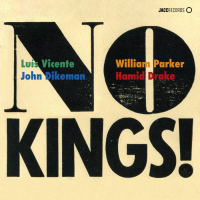Home » Jazz Articles » Album Review » Sabrina Lastman: The Candombe Jazz Sessions
Sabrina Lastman: The Candombe Jazz Sessions
This album also present Lastman's eclectic tastes as an artist who was born in Montevideo, Uruguay (where she studied classical singing and piano), migrated to Jerusalem, Israel, where she studied jazz, and then settled in New York, where she studies with experimental vocal artist Meredith Monk and began to reassess her own culture in general and the Afro-Uruguayan candombe in particular.
She begins with the playful "Axis," a wordless original that sounds at first like paying homage to Steve Reich's repetitive modules but spiced with Latin tinge. The track features the emphatic interplay of her working quartet. "Circular" is another playful song, where Lastman stages her own poem in a mini-drama, with a beautiful solo segment by bassist Pablo Aslan.
"Color de Arena," based on a poem by Uruguayan poet, Washinton Benavides, and arranged for a string quartet, is full of heartfelt yearnings. Lastman uses her vocals as a percussive instrument when she presents the candombe sound with her shining version of Uruguayan singer-percussionist Ruben Rada's "Tengo un Candombe para Gardel." She continues with a duet featuring percussionist David Silliman on "Brisca Frisca," which features her amazing vocal range, her experimental attitude with pure sound singing, and her arresting ability to tell a story with each syllable.
Her interpretation of Egberto Gismonti "Água e Vinho," with lyrics by Geraldo E. Carneiro (both Brazilians), stress the melancholic melody and story with touching restraint. Lastman delivers another emotional performance of the Uruguayan lullaby "Zea Mais." "A Lo Lejos" is the most conventional jazz composition here. Lastman's wordless vocals, her quartet and guest trumpeter Alexander Norris, all improvise with candombe groove, with impressive solos by Aslan, Norris and Silliman. Her own "Deep Inside" continues the flirtation between jazz and candombe.
Lastman closes this journey with a stunning solo vocal performance, "Cilada Verbal," a poem by Brazilian poet Romano de Sant'Anna. The Candombe Jazz Sessions is a beautiful and daring journey, full of surprises and experiences.
Track Listing
Axis; Circular; Color de Arena; Tengo un Candombe para Gardel; Brisa Fresca; Agua E Vinho; A Lo Lejos; Zea Mais; Deep Inside; Cilada Verbal.
Personnel
Sabrina Lastman
vocalsSabrina Lastman: vocals; Emilio Solla: piano; Pablo Aslan: double bass; David Silliman: drums, percussions; Alexander Norris: trumpet (7); Meg Okura: violin (1, 3); Dave Eggar: cello (3, 6); Ernesto VillaLobos: violin (3); Daphna Mor: recorders (8); Arturo Prendez: Candombe drum piano (4);Manuel Silva: Candombe drum repique (4); Fabricio Teodoro: Candombe drum chico (4).
Album information
Title: The Candombe Jazz Sessions | Year Released: 2012 | Record Label: Zoho Music
Tags
PREVIOUS / NEXT
Support All About Jazz
 All About Jazz has been a pillar of jazz since 1995, championing it as an art form and, more importantly, supporting the musicians who make it. Our enduring commitment has made "AAJ" one of the most culturally important websites of its kind, read by hundreds of thousands of fans, musicians and industry figures every month.
All About Jazz has been a pillar of jazz since 1995, championing it as an art form and, more importantly, supporting the musicians who make it. Our enduring commitment has made "AAJ" one of the most culturally important websites of its kind, read by hundreds of thousands of fans, musicians and industry figures every month.




















